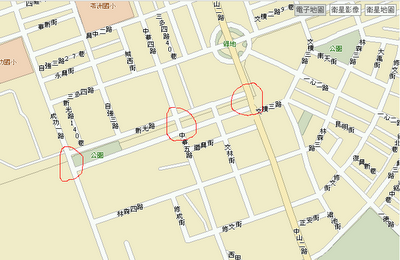Used bikes in Kaohsiung
To the question, "請問有人知道在高雄哪裡有二手腳踏車店嗎" ("I'd like to ask--does someone know if in Kaohsiung there is a second-hand bicycle shop?") the answer was "文武街與昇平街交叉口..滿多二手腳踏車的"(At the intersection of ShēngPíng St and WénWǔ 3rd St, Lingya District..there are quite a few bicycles."
View Larger Map
Stupid Google map. It's at the flag below:

We bought a couple of used bikes for about a thousand NT each. There are various repairs, including mismatched wheels, but they're good enough for riding around town.
Another small shop on 中正四路 between the police station and 成功一路 has a smaller selection.
View Larger Map
Stupid Google map. It's at the flag below:
We bought a couple of used bikes for about a thousand NT each. There are various repairs, including mismatched wheels, but they're good enough for riding around town.
Another small shop on 中正四路 between the police station and 成功一路 has a smaller selection.

